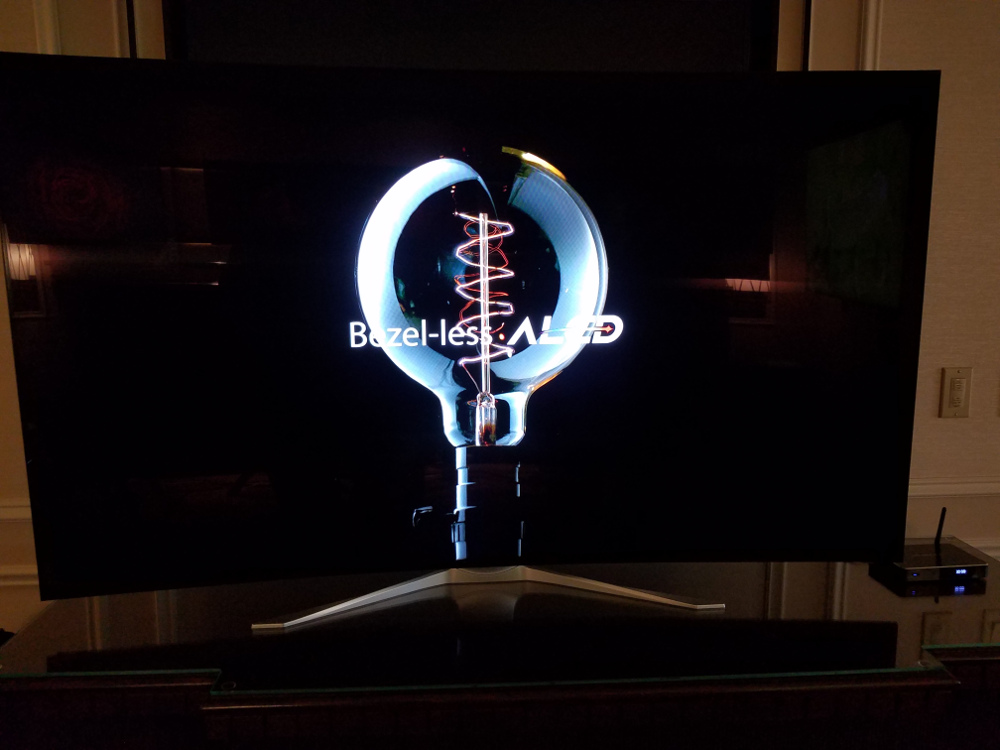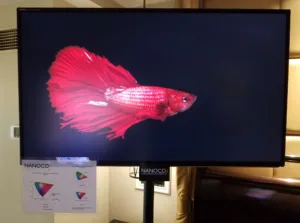We met with Quantum Dot developer Nanoco in their suite in the Venetian at CES 2018. The first thing they showed us were three displays that had been modified to remove quantum dot films from a competitor and new QD film inserted with quantum dot manufactured by Nanoco and a film manufactured by one of their partners. The aim was to show that their solution is every bit as good as their competitors’.
On display was an Asus display with 99% coverage of the Adobe color gamut. Nanoco did this with their Cd-free film, replacing a film that used Cd-based quantum dots.
The second was a modified Samsung TV that achieved 95% of P3 or 125% of sRGB. This is the same as the unmodified TV, but with better black levels.
The third was a BenQ monitor that achieved 100% of sRGB – the same as before modification.
Also being demonstrated was a 65” curved 4K panel from AUO. A 75” version first shown at the Touch Taiwan show last fall. This offers 1000 dimmable zones, 2000 cd/m² and 100% coverage of DCI-P3. An 85” 8K panel from AUO was also shown with a QD film from Nanoco that achieves 98% coverage of DCI (different color filter).

Nanoco said that in their discussions with TV makers, the clear goal is 100% coverage of DCI-P3. But for monitors, the spec can be a bit lower at 95% of P3 because of the use of different color filters.
In terms of engagement with industry, Nanoco says to expect gaming monitors to be the first products to use their materials. These should arrive this summer. 2019 will be when TVs using their films will become available. Mobile HDR using LCDs and quantum dots looks interesting too. While many mobile device makers would like to use LED panels, supply constraints mean many want to extend LCD life here. The challenger here is the reduce the thickness of the QD film from the 0.3 mm typical of TV applications (it is thick to avoid sagging) down to around 0.12mm for mobile. They hope to eventually move this down to 0.15mm.
Nanoco says they also have programs to look at using quantum dots as color conversion materials in microLED solutions as well.
In terms of quantum dot color filters, they continue to work on the materials and printing solutions, but based on the partners they are working with currently, commercialization is probably still two to three years off.

